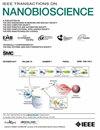通过基于反事实推理的数据扩充,改进药物副作用关联预测框架。
IF 4.4
4区 生物学
Q1 BIOCHEMICAL RESEARCH METHODS
引用次数: 0
摘要
检测药物的副作用是药物开发的一项基本任务。随着公开生物医学数据的增加,研究人员提出了许多预测药物副作用关联(DSAs)的计算方法,其中基于网络的方法在生物医学领域受到广泛关注。然而,数据稀缺问题给现有的 DSAs 预测模型带来了巨大挑战。虽然已经有多种数据增强方法被提出来解决这一问题,但现有方法大多采用随机的方式来处理原始网络,忽略了 DSA 存在的因果关系,导致 DSA 预测效果不佳。本文提出了一种基于反事实推理的数据增强方法,以提高任务的性能。首先,我们通过整合多个生物医学数据构建了一个异构信息网络(HIN)。在对 HIN 进行群落检测的基础上,我们设计了一种基于反事实推理的方法来推导增强链接,并相应地得到了一个增强的 HIN。然后,应用基于元路径的图神经网络学习药物和副作用的高质量表征,并在此基础上获得预测的 DSA。最后,我们进行了综合实验,结果证明了所提出的基于反事实推理的数据增强方法在 DSAs 预测任务中的有效性。本文章由计算机程序翻译,如有差异,请以英文原文为准。
An Improved Framework for Drug-Side Effect Associations Prediction via Counterfactual Inference-Based Data Augmentation
Detecting side effects of drugs is a fundamental task in drug development. With the expansion of publicly available biomedical data, researchers have proposed many computational methods for predicting drug-side effect associations (DSAs), among which network-based methods attract wide attention in the biomedical field. However, the problem of data scarcity poses a great challenge for existing DSAs prediction models. Although several data augmentation methods have been proposed to address this issue, most of existing methods employ a random way to manipulate the original networks, which ignores the causality of existence of DSAs, leading to the poor performance on the task of DSAs prediction. In this paper, we propose a counterfactual inference-based data augmentation method for improving the performance of the task. First, we construct a heterogeneous information network (HIN) by integrating multiple biomedical data. Based on the community detection on the HIN, a counterfactual inference-based method is designed to derive augmented links, and an augmented HIN is obtained accordingly. Then, a meta-path-based graph neural network is applied to learn high-quality representations of drugs and side effects, on which the predicted DSAs are obtained. Finally, comprehensive experiments are conducted, and the results demonstrate the effectiveness of the proposed counterfactual inference-based data augmentation for the task of DSAs prediction.
求助全文
通过发布文献求助,成功后即可免费获取论文全文。
去求助
来源期刊

IEEE Transactions on NanoBioscience
工程技术-纳米科技
CiteScore
7.00
自引率
5.10%
发文量
197
审稿时长
>12 weeks
期刊介绍:
The IEEE Transactions on NanoBioscience reports on original, innovative and interdisciplinary work on all aspects of molecular systems, cellular systems, and tissues (including molecular electronics). Topics covered in the journal focus on a broad spectrum of aspects, both on foundations and on applications. Specifically, methods and techniques, experimental aspects, design and implementation, instrumentation and laboratory equipment, clinical aspects, hardware and software data acquisition and analysis and computer based modelling are covered (based on traditional or high performance computing - parallel computers or computer networks).
 求助内容:
求助内容: 应助结果提醒方式:
应助结果提醒方式:


